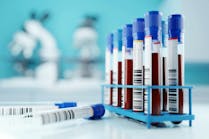The Clinical
Laboratory Improvement Advisory Committee (CLIAC) met at the Centers for
Disease Control and Prevention (CDC) in Atlanta on February 4-5, 2009.
Discussion included updates from the Food and Drug Administration (FDA),
Centers for Medicare and Medicaid Services (CMS), and CDC; and
laboratory-systems research efforts. This was the last meeting for CLIAC
members Merilyn Francis, BSN, MPP; Carol L. Greene, MD; Lee H. Hilborne,
MD, MPH; and David L. Smalley, PhD, MSS, BCLD. Paul Kimsey, PhD, deputy
director, Office of the State Public Health, California Department of
Public Health was welcomed as CLIAC’s newest member.
CDC update
Donald J. (Joe) Boone, PhD, associate director
for Science in the CDC’s Division of Laboratory Systems, retired in
January. Dr. Boone, a long-time associate of CLIAC, was a faithful
friend to the laboratory industry. With several shifts in positions at
the CDC, Roberta B. Carey, PhD, acting director of that division, will
be the CDC’s ex-officio CLIAC representative. The CDC is also convening
a CLIAC workgroup, chaired by CLIAC member James Nichols, PhD, to review
and modernize the proficiency testing (PT) regulations in CLIA subparts
H & I.
Two new CDC published guidelines are “Diagnosis of
Shiga-Toxin producing E coli by Clinical Diagnostic Laboratories” and
“Infection Prevention Control Guidance for Carbapenemase-Producing
Enterobacteriaceae in Acute Care Facilities.”
FDA news
With the December 2008 retirement of Steve Gutman,
MD, director of its Office of In Vitro Diagnostic Device Evaluation and
Safety, the FDA is advertising for that position.
The FDA also has finalized the CDER/CDRH joint
guidance for identifying the breakpoints for antimicrobial susceptibility
testing that had been in draft since 2007. Alberto Gutierrez, PhD, presented
this information. There is still no final date for the in vitro
diagnostic multivariate index assays, or IVDMIA, guidance.
A panel meeting will be set up to determine the
waive-ability for a specific instrument when a manufacturer files a
specific waiver request for a CBC/differential cell-counting device.
CMS review
Judith Yost, MA,
MT(ASCP), director of CMS’s Division of Laboratory Services, presented
its update. CMS published the proposed cytology PT rules (available at
http://edocket.access.gpo.gov/2009/E9-804.htm) on Jan. 16, 2009. The
preamble includes an extensive history of the cytology regulations. CMS
wants comments to rules to answer the following questions found in the
preamble:
- Is the proposed definition for “cytology challenge” appropriate
to address future technological advances? - Should criteria be included in the regulations for the pilot
testing before CMS approval of new cytology-testing media? - Should pilot testing include a comparison to current technology?
What is an acceptable comparison? - If specific criteria for pilot testing are required, what burden
would PT programs and laboratories incur by participating in a pilot
test? - Would requiring pilot testing cause an increase in the cost of
cytology PT?
CMS is confident that the cytology PT program has
been effective at identifying individuals that should not be reporting
patient results.
CMS continues to monitor more than 117
laboratories that market direct-to-consumer genetic testing, as well as
to enroll genetic-testing laboratories under CLIA and provide them with
education, and to crack down on laboratories that send PT samples to
referral labs. CMS recognizes that some laboratories were doing so by
following their own internal policies, but some were purposely trying to
obtain results to turn in for PT grading purposes. Laboratories are not
permitted under any circumstances to turn in the results from referred
PT samples as part of their PT programs.
Since 1992, the CLIA-waived tests have increased
from eight to approximately 100 tests. This represents more than 1,000
test systems. The number of laboratories issued a Certificate of Waiver
(CW) is 63% of the >206,000 CLIA-registered laboratories. CMS continues
to provide education to CW labs as a means to ensure they follow
manufacturers’ recommendations for test procedures.
CDC’s Healthier Nation initiative
The United States spends more than $2
trillion every year on healthcare, more than any other country —
but is ranked no higher than 15th in health status
(disability-adjusted life expectancy). The CDC is seeking to
improve our nation’s world health status. It is recognized that
the United States currently does not invest in good health
preparedness, such as promoting good health; preventing disease,
injury, and disability; and preparing for new health threats.
CDC’s research agenda is committed to performing a gap analysis
to determine what we know and what we need to know to improve
people’s health. To improve our status, the CDC is working on an
Alliance for a Healthier Nation that relies on the premise that
through a “means,” there are “ways” to get to the “end.” The
“means” are all groups and types of entities that could
communicate via targeted interventions — businesses, government
entities, schools, public figures, and civic groups. The “way”
is via a grassroots social movement. And the “end” is policies
that ensure a healthier nation with a higher ranking in its
world health status.
C. Anne Pontius, MBA, CMPE, MT(ASCP), is senior
medical practice consultant at State Volunteer Mutual Insurance Company
in Brentwood, TN, and member of MLO’s Editorial Advisory Board.





